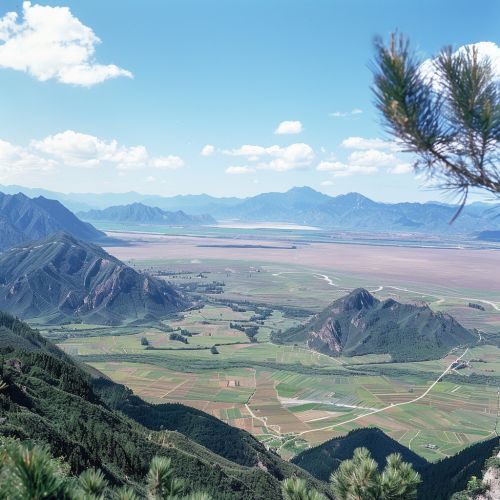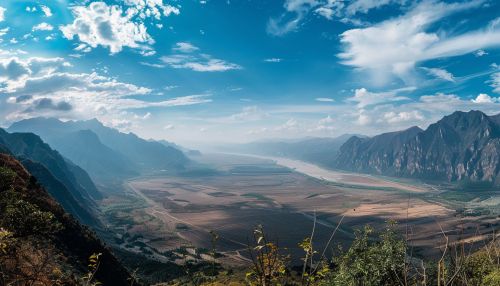Sichuan Basin
Geography
The Sichuan Basin, also known as the Red Basin, is a large geographical region located in the southwestern part of the People's Republic of China. The basin is surrounded by mountains on all sides, including the Qinling to the north, the Daba Mountains to the northeast, the Wushan Mountains to the east, the Dalou Mountains to the south, and the Qionglai Mountains and Longmen Mountains to the west. The basin covers an area of approximately 165,000 square kilometers and is known for its fertile soil and abundant natural resources.


Climate
The Sichuan Basin has a humid subtropical climate, characterized by hot, humid summers and cool, damp winters. The basin's unique geographical location, surrounded by mountains, contributes to its high humidity and frequent fog. The region receives abundant rainfall, with an annual average of 1000 to 1300 millimeters. The rainy season typically occurs from June to September, during the East Asian Monsoon.
Flora and Fauna
The Sichuan Basin is home to a rich diversity of flora and fauna. The region's dense forests are dominated by broad-leaved deciduous trees, such as oaks and maples, and evergreen species, such as firs and pines. The basin is also known for its bamboo forests, which provide a habitat for the endangered Giant Panda. In addition to the Giant Panda, the basin's diverse wildlife includes species such as the Sichuan Takin, Golden Snub-nosed Monkey, and the Chinese Giant Salamander.
Economy
The Sichuan Basin is one of the most important economic regions in China. The basin's fertile soil and favorable climate make it an ideal location for agriculture. The region is a major producer of rice, wheat, and corn, as well as fruits such as oranges, peaches, and pears. The Sichuan Basin is also known for its tea plantations, particularly in the Mengding Mountain area.
In addition to agriculture, the Sichuan Basin has a diverse industrial sector. The region is rich in natural resources, including coal, natural gas, and minerals. The basin is a major center for the production of iron and steel, machinery, electronics, and textiles. The city of Chengdu, located in the western part of the basin, is a major hub for the IT and software industries.
History
The Sichuan Basin has a long history of human habitation, with archaeological evidence suggesting that the region has been inhabited for at least 4,000 years. The basin was the site of the ancient Shu civilization, which was known for its advanced bronze casting technology. The region was later incorporated into the Han dynasty, and has since been a part of various Chinese dynasties.
In the modern era, the Sichuan Basin has played a significant role in China's economic development. The region's abundant natural resources and strategic location have made it a key area for industrial development. The Sichuan Basin was also the site of the 2008 Sichuan earthquake, one of the deadliest earthquakes in Chinese history.
